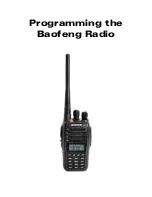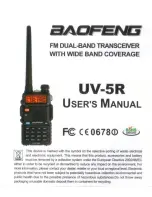
2
IP1896 • 2012-03-12
IT
EN
DICHIARAZIONE CE DI CONFORMITÀ
DITEC S.p.A. - via Mons. Banfi, 3 - 20142 Caronno P.lla (VA) - ITALY
dichiara che i radiocomandi serie GOL4, GOL4V, GOL4C, GOL4CV, BIXLR42 sono conformi
alla Direttiva 1999/5/CE R&TTE.
Caronno Pertusella, 2011-09-14
Marco Zini
(Managing Director)
1. TRASMETTITORE
I radiocomandi serie GOL servono per attivare da remoto porte e cancelli motorizzati. I
radiocomandi serie GOL sono compatibili con tutti i ricevitori radio BIX e con tutti i quadri elettronici
con ricevitore radio a bordo.
2. RICEVITORE (fig. 1)
I ricevitori radio BIXLR42 possono essere inseriti direttamente sui quadri elettronici o nella base
porta schede CONT1. Il modulo memoria BIXMR del ricevitore radio può contenere max 1000
trasmettitori.
NOTA: è possibile utilizzare anche il modulo memoria BIXMR2 da 200 trasmettitori.
Verificare che il modulo memoria BIXMR sia inserito sul connettore COM del ricevitore radio.
ATTeNzIONe: l’inserimento e l’estrazione del modulo memoria devono essere effettuate in
assenza di alimentazione.
I ricevitori radio sono dotati di antenna (filo rigido di lunghezza 173 mm). In alternativa è possibile
collegare l’antenna accordata BIXAL. Per collegare l’antenna al ricevitore radio utilizzare un cavo
coassiale tipo RG58 (max 10 m). L’antenna deve essere installata in posizione più elevata possibile
e lontano da strutture metalliche. E’ possibile utilizzare i lampeggianti provvisti di antenna a filo.
3. SELEZIONE CANALI-USCITE (fig.1)
I 4 canali dei radiocomandi possono essere abbinati alle 4 uscite del ricevitore radio BIXLR42
mediante i jumper:
JR1
uscita OUT1, attivazione led LD1
JR2
uscita OUT2, attivazione led LD2
JR3
uscita OUT3, attivazione led LD3
JR4
uscita OUT4, attivazione led LD4
La funzionalità dei 4 canali è impostabile mediante i dip-switch:
OFF
ON
DIP1
CH1 = impulsivo
CH1 = passo-passo
DIP2
CH2 = impulsivo
CH2 = passo-passo
DIP3
CH3 = impulsivo
CH3 = temporizzato (*)
DIP4
CH4 = impulsivo
CH4 = passo-passo
(*): il trimmer T3 regola il tempo di attivazione dell’uscita assegnata al tasto CH3 (da 10 s a
165 s).
4. MEMORIZZAZIONE GOL4-GOL4C (fig. 2)
- Premere e rilasciare il pulsante PRG presente sul ricevitore radio o sul quadro elettronico, il
led segnalazione SIG si accende.
- Effettuare una trasmissione premendo i tasti CH che si desidera memorizzare del radiocomando
(entro la portata del ricevitore radio). Il radiocomando viene così memorizzato. Durante questa
fase il led segnalazione SIG lampeggia. Quando il led segnalazione SIG torna acceso è
possibile abilitare un nuovo radiocomando. Abilitare tutti i nuovi radiocomandi effettuando una
trasmissione come indicato.
NOTA: se JR5=ON vengono memorizzati tutti i canali del radiocomando, se JR5=OFF viene
memorizzato solo il tasto canale premuto.
- L’uscita dalla procedura avviene in modo automatico dopo 10 s dall’ultima trasmissione oppure
premendo nuovamente il tasto PRG (il led segnalazione SIG si spegne).
5. MEMORIZZAZIONE A DISTANZA GOL4 (fig. 3)
Per memorizzare nuovi radiocomandi senza agire sul ricevitore radio o sul quadro elettronico,
premere per 5 s il tasto PRG di un radiocomando GOL4 già memorizzato fino all’accensione del led
(entro la portata del ricevitore radio) e premere uno qualsiasi dei tasti CH del nuovo radiocomando;
verranno memorizzati gli stessi tasti CH del radiocomando GOL4 già presente in memoria.
Impostare JR6=OFF per disabilitare la memorizzazione a distanza.
NOTA: fare attenzione a non memorizzare involontariamente radiocomandi non desiderati.
6. CLONAZIONE GOL4C (fig. 4)
- Premere contemporaneamente i tasti CH1 e CH2 di un nuovo radiocomando per 5 s, il led
rosso si accende.
- Avvicinare a contatto il radiocomando GOL4C già memorizzato ed eseguire una trasmissione
premendo uno qualsiasi dei tasti CH.
- Dopo tre lampeggi di conferma si esce automaticamente dalla procedura di clonazione.
NOTA: è possibile effettuare la clonazione anche dei trasmettitori BIXLS2.
7. CLONAZIONE GOL4C CON INSERIMENTO CODICE (fig. 5)
- Premere contemporaneamente i tasti CH1 e CH2 di un nuovo radiocomando per 5 s, il led
rosso si accende.
- Inserire un codice di 10 cifre premendo CH1=0 (OFF) o CH2=1 (ON). Tra una pressione e l’altra
si dispone di 5 s.
- L’uscita dalla procedura avviene in modo automatico dopo l’inserimento della decima cifra. (Il
radiocomando effettua 3 lampeggi)
NOTA: questa procedura rende il radiocomando GOL4C equivalente ad un radiocomando
BIXLS2.
8. CANCELLAZIONE RADIOCOMANDI DA MEMORIA RICEVITORE
- Tenere premuto per 3 s il pulsante PRG presente sul ricevitore radio o sul quadro elettronico,
il led segnalazione SIG comincia a lampeggiare.
- Per cancellare tutti i trasmettitori dalla memoria premere nuovamente per 3 s il pulsante
PRG.
- Per cancellare un singolo radiocomando, premere uno dei tasti CH precedentemente
memorizzati del radiocomando che si desidera cancellare.
- La cancellazione viene confermata dal lampeggio veloce del led SIG.
9. SOSTITUZIONE BATTERIA (fig. 6)
Usare la massima cautela nel sostituire la batteria. Fare attenzione alle polarità.
Non maneggiare la batteria con l’ausilio di pinze o altri utensili, per evitare rischi di scarica o
esplosione.
Per garantire prestazioni ottimali, si consiglia di sostituire la batteria una volta l’anno o quando si
riscontri un consistente calo di portata.
EC DECLARATION OF CONFORMITY
DITEC S.p.A. - via Mons. Banfi, 3 - 20142 Caronno P.lla (VA) - ITALY
declares that GOL4, GOL4V, GOL4C, GOL4CV, BIXLR42 remote controls meet the essential
requisites fixed by the Directive 1999/5/EC R&TTE.
Caronno Pertusella, 2011-09-14
Marco Zini
(Managing Director)
1. TRANSMITTER
The GOL series transmitters are used to activate motorized doors and gates from a distance,
GOL series transmitters are compatible with all BIX radio receivers and with all control panels
with an incorporated radio receiver.
2. RECEIVER (fig. 1)
The BIXLR42 radio receivers can be inserted directly on the control panels or in the CONT1
holding-board base. The BIXMR memory module of the radio receiver can contain up to 1000
transmitters.
NOTe: the radio receiver is also compatible with the BIXMR2 200-code memory modules.
Check that the BIXMR memory module is inserted on the COM connector of the radio receiver.
WARNING: the insertion and the extraction of the memory module must be carried out in the
absence of power supply.
The radio receivers are equipped with an antenna (rigid wire of 173 mm). Alternatively, it is possible
to connect the tuned BIXAL antenna. To connect the antenna to the radio receiver, use a RG58
type coaxial cable (max 10 m). The antenna must be positioned as high as possible, far from any
metal structures. You can use the flashing lights supplied with a wired antenna.
3. CHANNELS-OUTPUTS SELECTION (fig.1)
The 4 transmitter channels must be matched with the four outputs of the BIXLR42 radio receiver
by means of the jumpers:
JR1
OUT1 output, activation of LD1 LED
JR2
OUT2 output, activation of LD2 LED
JR3
OUT3 output, activation of LD3 LED
JR4
OUT4 output, activation of LD4 LED
The working of the 4 channels can be set by the corresponding dip-switch:
OFF
ON
DIP1
CH1 = impulsive
CH1 = step-by-step (toggle)
DIP2
CH2 = impulsive
CH2 = step-by-step (toggle)
DIP3
CH3 = impulsive
CH3 = time delay (*)
DIP4
CH4 = impulsive
CH4 = step-by-step (toggle)
(*): activation time of OUT3 output (from 10 s to 165 s) can be adjusted via trimmer T3.
4. GOL4-GOL4C STORAGE (fig. 2)
- Press and release the PRG button on the radio receiver or on the control panel; the SIG LED
lights up.
- Make a transmission by pressing one of the desired CH buttons of the transmitter (within the
range of the radio receiver). The transmitter is now stored. During this phase, the SIG LED
flashes. When the SIG LED is again lit up, it is possible to validate another transmitter. Validate
all the new transmitters by making a transmission as indicated.
NOTe: with JR5=ON all the channels are stored, with JR5=OFF only the channel key that is
pressed is stored.
- You automatically exit the procedure 10 seconds after the last transmission, or you can press
the PRG button again (the SIG LED goes off).
5. GOL4 REMOTE STORAGE (fig. 3)
To store new transmitters without using the radio receiver or the control panel, press the PRG
key of a GOL4 transmitter already stored for 5 s until the LED comes on (within the range of the
radio receiver) and press any one of the CH keys on the new transmitter; the same CH keys as
the GOL4 transmitter already in the memory will be stored.
Set JR6=OFF to disable the remote storage.
NOTe: be careful not to accidentally store unwanted transmitters.
6. GOL4C CLONING (fig. 4)
- Press simultaneously for 5 s CH1 and CH2 keys of a new transmitter; the red LED comes on.
- Bring the already memorized GOL4C transmitter close, and make a transmission by pressing
any one of the CH keys.
- After three confirmation flashes, you automatically exit the procedure.
NOTe: it is also possible to carry out the cloning of the BIXLS2 transmitters.
7. GOL4C CLONING USING CODE (fig. 5)
- Press simultaneously for 5 s CH1 and CH2 keys of a new transmitter; the red LED comes on.
- Insert a 10-digit code, pressing CH1=0 (OFF) or CH2=1 (ON). You have 5 s between one
pressing and the next one.
- You exit the procedure automatically after inserting the tenth digit. (The transmitter flashes 3
times)
NOTe: this procedure makes the GOL4C transmitter equivalent to a BIXLS2 transmitter.
8. TRANSMITTERS ERASING FROM RECEIVER MEMORY
- Keep pressed for 3 s the PRG button on the radio receiver or on the control panel, the SIG LED
begins to flash.
- To erase all the transmitters from the memory of the radio receiver keep pressed for 3 s again
the PRG button.
- To erase a single transmitter, press one of the previously stored CH keys of the transmitter to
be erased.
- The cancellation is confirmed by the quick flashing of the SIG LED.
9. BATTERY SUBSTITUTION (fig. 6)
Be extremely careful when replacing the battery. Pay attention to the polarities.
Do not handle the battery with pliers or other tools, to avoid the risk of discharge or explosion.
To ensure an optimum performance, you are advised to replace the battery once a year, or when
noticed a substantial loss of range.





















